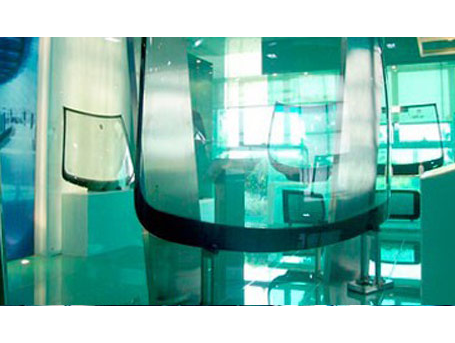Laminated Windshield
Product Description
Laminated front windshield for automobiles is a kind of compound glass formed when tough polyvinyl butyral (PVB) interlayer is inserted between pieces of glasses and then processed under high temperature and pressure. It has high mechanical strength and is transparent, resistant to light, heat and coldness. At present, the company manufactures more than 30,000 types of such windshield, covering nearly all auto types already launched into the market. The windshield of the largest specification is 2700mm×2300mm laminated windshield for coach. Sixty percent of the products are for export and 40% of them are sold in China.


Characteristic
Excellent Safety Performance; Since the PVB films adhere tenaciously to the out-layer glasses, it can resist the penetration during accidental crash as the car is travelling at a high speed. When the glass gets broken by impact force, the broken pieces will be stuck by the tough PVB film, which can prevent the broken pieces from flying and falling. The whole glass will be kept perfectly. Therefore, personal injury caused by flying of falling broken pieces can be avoided while the cars can keep running. In this case, traffic accidents can be avoided and personal safety is effectively ensured.
Sound Insulation
The PVB film in laminated glass for automobiles can damp sound waves, avoid effects on persons in automobiles exerted by noise transmission when the car is running at a high speed, as well as noticeably improve the environment in the cars. It can produce better sound insulation effects than common glass and insulating glass.


Anti-ultraviolet Radiation
Laminated glass for automobile has the capability of lasting resistance to ultraviolet radiation. The 6mm float glass can resist ultraviolet with the wavelength of shorten than 380mm. It can resist 29% of ultraviolet rays. However, clear laminated glass for automobiles with the same thickness can resist more than 99% of ultraviolet rays. Thus, it protects decoration in the car from fading and aging caused by ultraviolet radiation.
Quality Standard
China 3C
European Union ECE R43
U.S. DOT